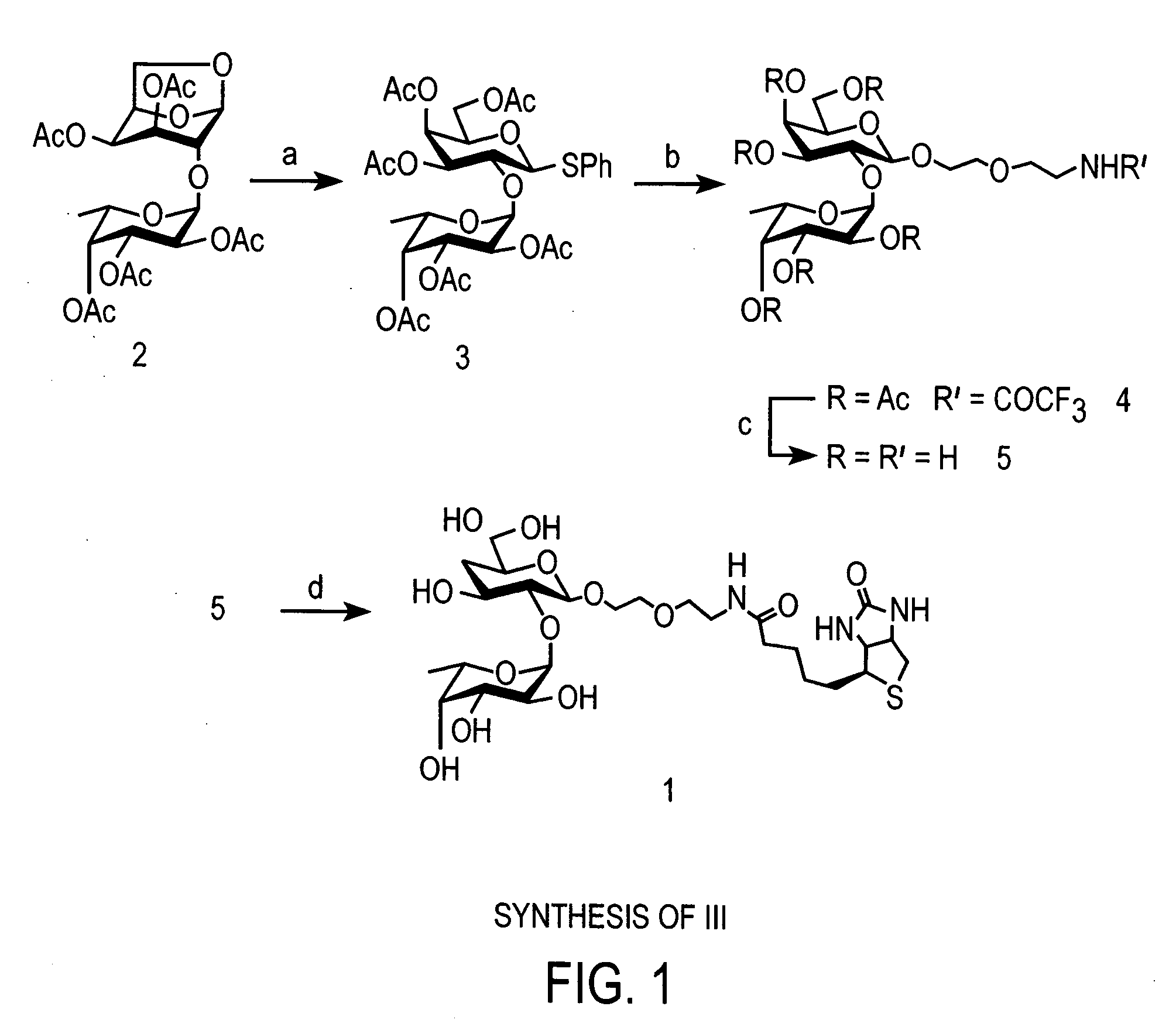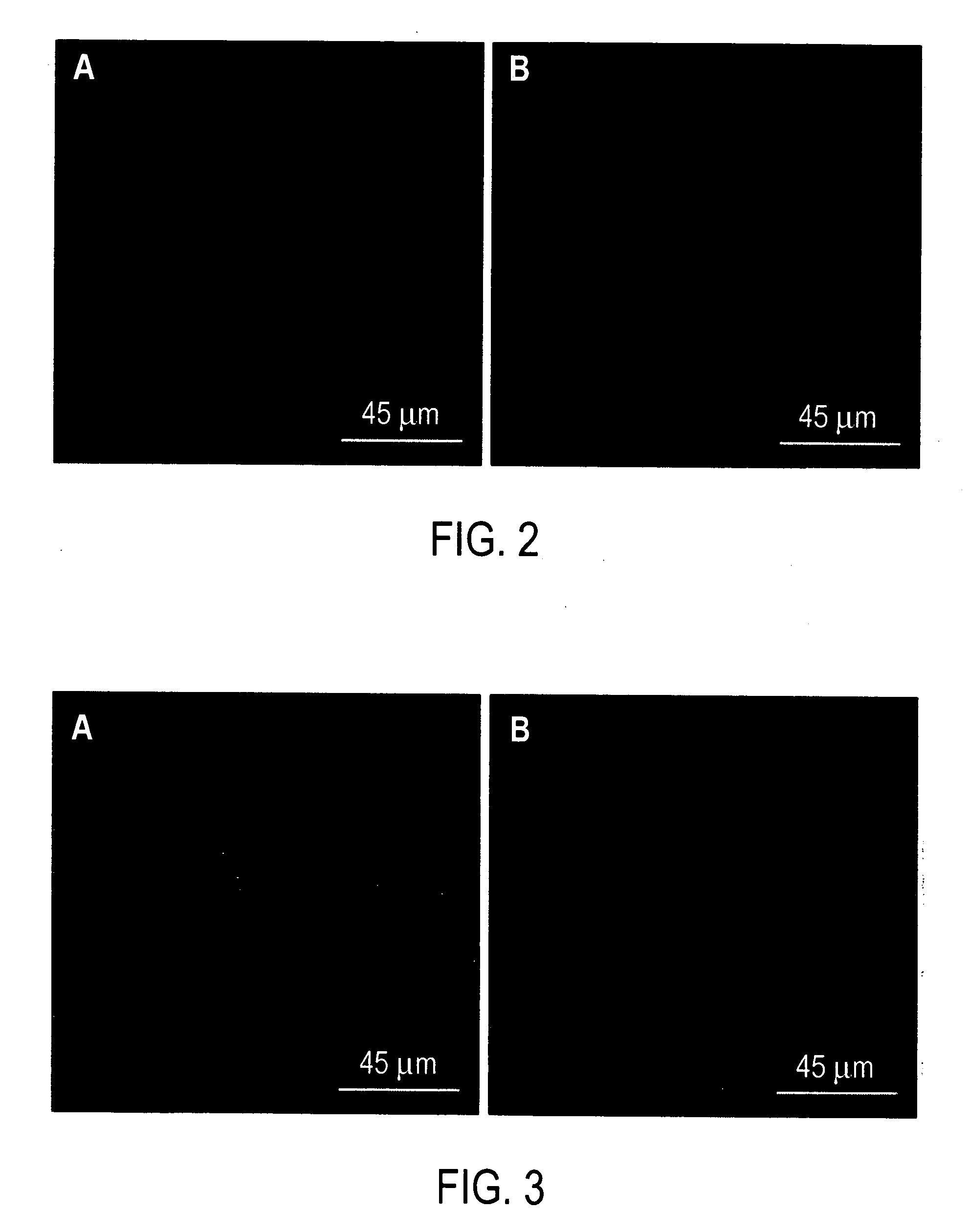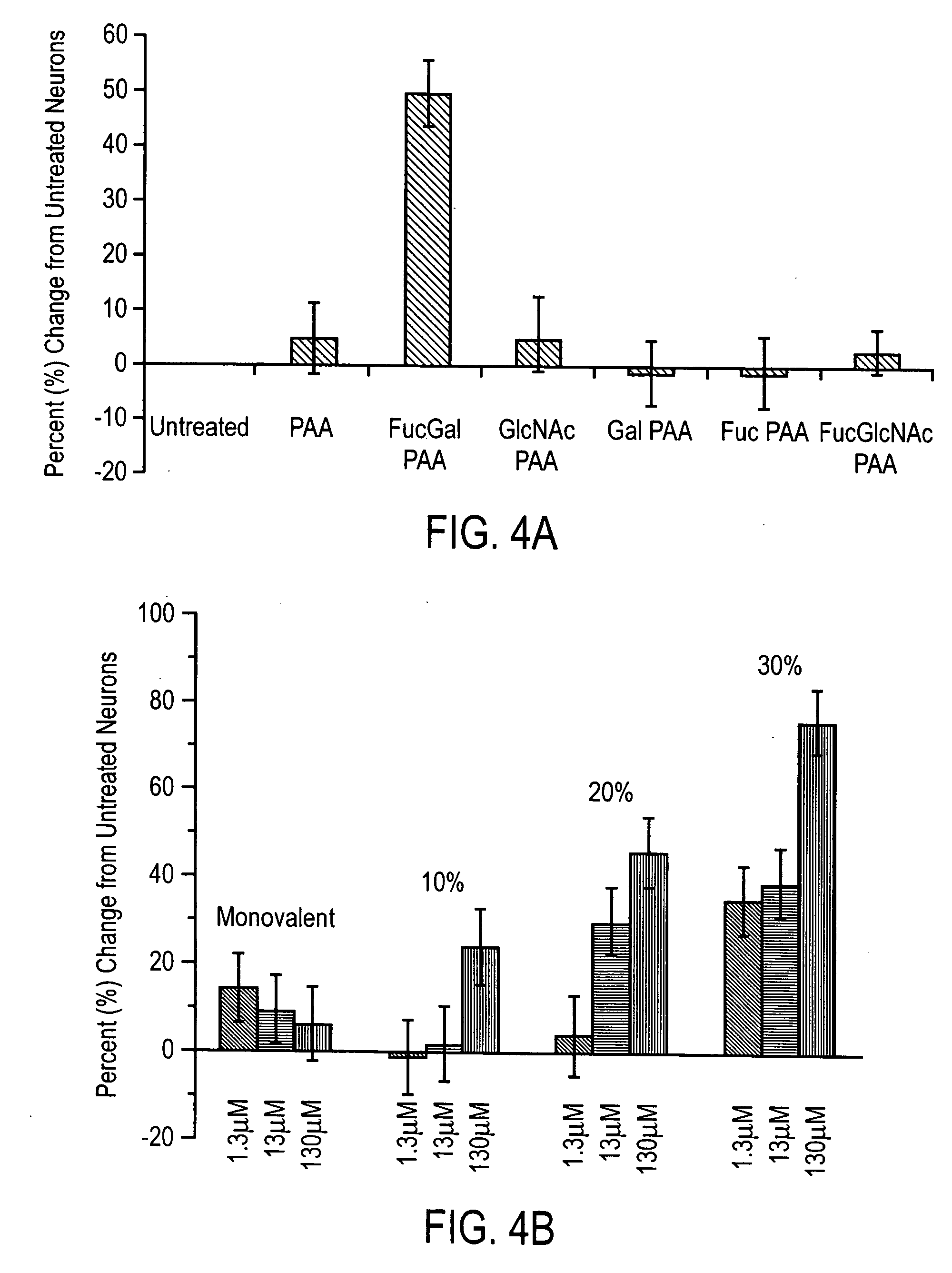Carbohydrate modifiers of neuronal growth
a carbohydrate modifier and neuronal growth technology, applied in the field of carbohydrate modifiers of neuronal growth, can solve the problems of neuronal death, 2-dgal also interferes with the maintenance of long-term potentiation (ltp), etc., and achieves strong effect, induce amnesia, and reduce the level of fuc(1-2)gal epitop
- Summary
- Abstract
- Description
- Claims
- Application Information
AI Technical Summary
Benefits of technology
Problems solved by technology
Method used
Image
Examples
example 1
Synthesis of Compound 1 (Biotinylated Fuca(1-2)Gal).
[0058] Compound III, biotinylated Fucα(1-2)Gal, was synthesized as follows and as shown in FIG. 1, for use as a probe for molecules that bind Fucα(1-2)Gal.
[0059] Phenyl 3,4,5-tri-O-(2,3,4-tri-O-acetyl-α-L-fucopyranosyl)-1-thio-β-D-galactopyranoside (3): The following thioglycoside formation procedure was adapted from a method reported by Motawia and coworkers. (Motawia, M. S., et al., J. Carbohydr. Res. 252:69-84 (1994)). Known compound 2 (Wegmann, B., et al., Carbohydr. Res. 184:254-261 (1988)) (1.80 g, 3.40 mmol), (phenylthio)trimethylsilane (2.0 mL, 10.4 mmol) and zinc iodide (3.30 g, 10.4 mmol) in CH2Cl2 (20.0 mL) were stirred at rt for 21 h. The mixture was diluted with EtOAc (120 mL) and washed successively with saturated aqueous NaHCO3 (150 mL), water (3×50 mL) and brine (20 mL). The organic layer was then dried over sodium sulfate, filtered and concentrated in vacuo. The residue was dissolved in dry THF (15.0 mL) and 1 M ...
example 2
Identification of Neuronal Lectin Receptors
[0062] It was hypothesized that the Fucα(1-2)Gal moiety could be interacting with a lectin receptor in the brain. As no such proteins had been reported, compound III was used to probe for the presence of potential Fucα(1-2)Gal specific lectin receptors in neurons.
[0063] Hippocampal neurons were cultured using a procedure modified from Goslin and Banker, in Culturing Nerve Cells, Banker, G., Goslin, K., Eds., pp. 251-281, MIT Press: Cambridge, Mass. 1991. Briefly, the hippocampi of embryonic day 18 (E18) rats were dissected and transferred to 4.5 mL of ice-cold Calcium and Magnesium Free-Hank's Balanced Salt Solution (CMF-HBSS). Trypsin (2.5%, no EDTA) was added to 5 mL, and the tissue was incubated for 15 min at 37° C. The trypsin solution was removed and the tissue sample washed three times with 5 mL of CMF-HBSS. Cells were then dissociated from the tissue in 1 mL of CMF-HBSS by passing through a P1000 pipet tip twenty times. The cells w...
example 3
Demonstration of Neuronal Response With a Fuca(1-2)Gal Polymer
[0066] The association of Fucα(1-2)Gal with potential lectins was studied to determine if it would stimulate neuronal growth. As carbohydrates have weak binding affinities for lectins (Kassoc=103−106M), (Schmid, R.-S., et al., J. Neurosci., 20:4177-4188 (2000)) we used polyacrylamide polymers bearing multiple Fucα(1-2)Gal epitopes (FucGal-PAA; MW ˜30 kDa, 20% GlycoTech, Gaithersburg, Md.) to enhance the interaction. All experiments were performed in duplicate. Polymers with 20% density were used for part A, while 10%, 20%, or 30% disaccharide density were used for part B. Hippocampal neurons were cultured as described above. After treatment with kynurenic acid, media was removed, and 50 μL solution of carbohydrate-PAA conjugate in PBS or a 50 μL solution of lectin (3.7 μM) in HEPES was added to supplemented Neurobasal medium (450 μL) on each coverslip. The cultures were incubated in 5% CO2 at 37° C. and analyzed.
[0067] ...
PUM
| Property | Measurement | Unit |
|---|---|---|
| retention time | aaaaa | aaaaa |
| retention time | aaaaa | aaaaa |
| excitation wavelength | aaaaa | aaaaa |
Abstract
Description
Claims
Application Information
 Login to View More
Login to View More - R&D
- Intellectual Property
- Life Sciences
- Materials
- Tech Scout
- Unparalleled Data Quality
- Higher Quality Content
- 60% Fewer Hallucinations
Browse by: Latest US Patents, China's latest patents, Technical Efficacy Thesaurus, Application Domain, Technology Topic, Popular Technical Reports.
© 2025 PatSnap. All rights reserved.Legal|Privacy policy|Modern Slavery Act Transparency Statement|Sitemap|About US| Contact US: help@patsnap.com



